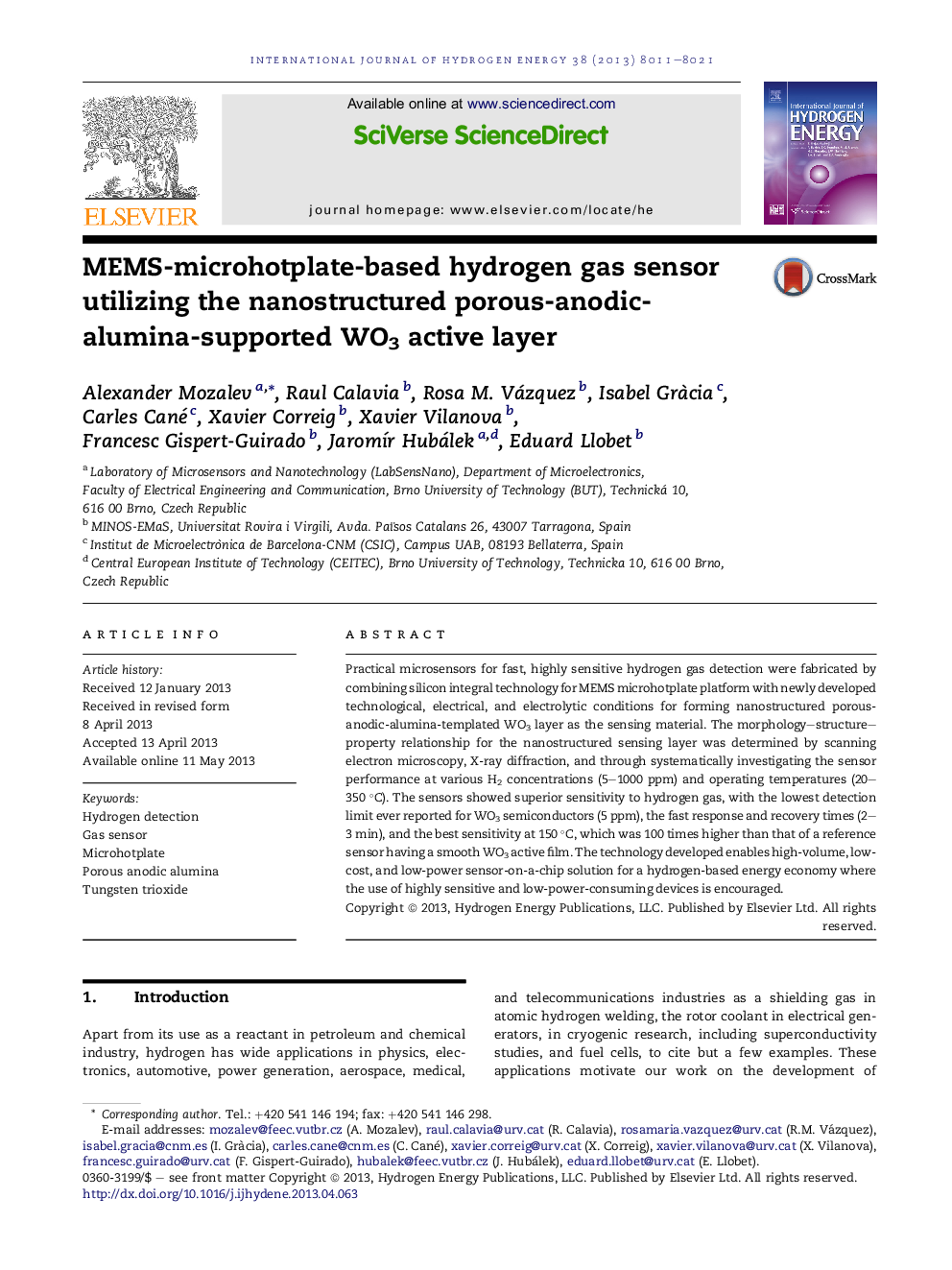| Article ID | Journal | Published Year | Pages | File Type |
|---|---|---|---|---|
| 1273657 | International Journal of Hydrogen Energy | 2013 | 11 Pages |
•Nanoporous WO3 semiconductor film was grown by sputtering over anodic alumina template.•The film was integrated into MEMS microhotplate platform for gas-sensing application.•The sensors show superior sensitivity to H2 at 150 °C with 5 ppm detection limit.•The technology enables high-volume, low-cost, and low-power sensor-on-a-chip solution.
Practical microsensors for fast, highly sensitive hydrogen gas detection were fabricated by combining silicon integral technology for MEMS microhotplate platform with newly developed technological, electrical, and electrolytic conditions for forming nanostructured porous-anodic-alumina-templated WO3 layer as the sensing material. The morphology–structure–property relationship for the nanostructured sensing layer was determined by scanning electron microscopy, X-ray diffraction, and through systematically investigating the sensor performance at various H2 concentrations (5–1000 ppm) and operating temperatures (20–350 °C). The sensors showed superior sensitivity to hydrogen gas, with the lowest detection limit ever reported for WO3 semiconductors (5 ppm), the fast response and recovery times (2–3 min), and the best sensitivity at 150 °C, which was 100 times higher than that of a reference sensor having a smooth WO3 active film. The technology developed enables high-volume, low-cost, and low-power sensor-on-a-chip solution for a hydrogen-based energy economy where the use of highly sensitive and low-power-consuming devices is encouraged.
Graphical abstractFigure optionsDownload full-size imageDownload as PowerPoint slide
